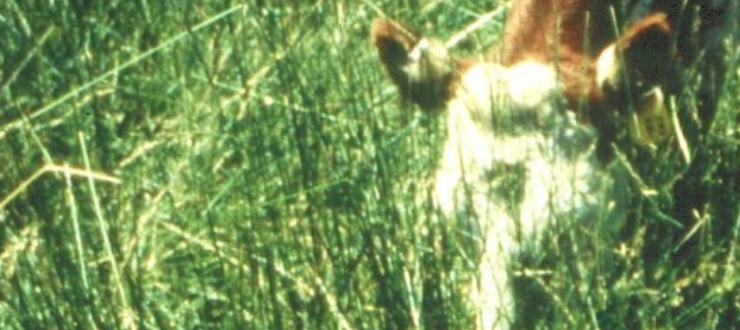
UNDERGRAZING CAN BE A PROBLEM
Good grazing management is one of the keys to having a profitable forage-livestock program. There are numerous benefits associated with grazing management, but regulating pasture forage height should be a major objective. Grazing too closely will result in less forage production and excess plant stress (some forage crops are much more tolerant of close grazing than others). Undergrazing is not discussed as frequently as overgrazing but is also undesirable
A great deal of forage (often high-quality forage) is wasted as a result of poor grazing management. This occurs mainly in spring with cool-season species (especially winter annuals) because forage growth is often rapid during the spring months. Stocking rates that were initially suitable may quickly become inadequate during the spring flush of growth.
As the amount of accumulated forage increases, the animals will waste more of it by trampling and fouling. In addition, tall-growing grasses may shade out clovers or other legumes. Also, young, tender forage is of higher quality than older, more fibrous material. Dead leaves, which are present in greater numbers in undergrazed pastures, lower forage quality even more. In many cases, keeping pastures grazed down to recommended levels may extend the grazing season a bit longer.
When a pasture is undergrazed, the overall average forage quality declines. Young, tender forage is of higher quality than older, more fibrous material. Leaves have a life span of only about 30 to 60 days, and if dead leaves are present in a pasture, they will further lower forage quality. Also, leaves are most efficient with regard to capturing sunlight when they are young, so productivity also declines as they age.
Pasture Growth.
When pasture growth is beginning to get too high, an obvious strategy could be to put more cattle on the pasture. For example, a stocker cattle operator might also put some brood cows on his winter annual pastures. In some years and in some situations it might be feasible to purchase some additional animals to help utilize excess forage growth.
Second Approach.
Reduce the amount of pasture to which the cattle have access. This can be as easy as closing a gate or erecting an electric fence. Concentrating cattle in this manner can be of benefit in two ways. The quality of the forage in the area being grazed remains high, and the forage that accumulates on the other side potentially can be harvested for hay or haylage.
Third Approach.
This approach, especially with a perennial forage crop, is simply to mow the pasture. While this does not make use of the accumulated forage growth, it will result in aftermath growth that is of improved quality. Clipping undergrazed pastures is particularly helpful in areas in which clovers or other legumes that are sensitive to shading are present.
In order for livestock to benefit nutritionally from forage, they have to consume it. The nutritional benefits increase as forage quality goes higher. It is admirable to have the ability to obtain a good pasture stand and manage it in a matter that results in good forage growth. It is more difficult and even more admirable to strive to maximum benefits via grazing management. This includes avoiding undergrazing.
Foraging Ahead is a column presented by Ragan & Massey and written by Dr. Don Ball, Professor Emeritus at Auburn University. Dr. Ball is one of the authors of the popular book “Southern Forages,” which can be found via a computer search that uses the words, “Southern Forages, The Fertilizer Institute.”